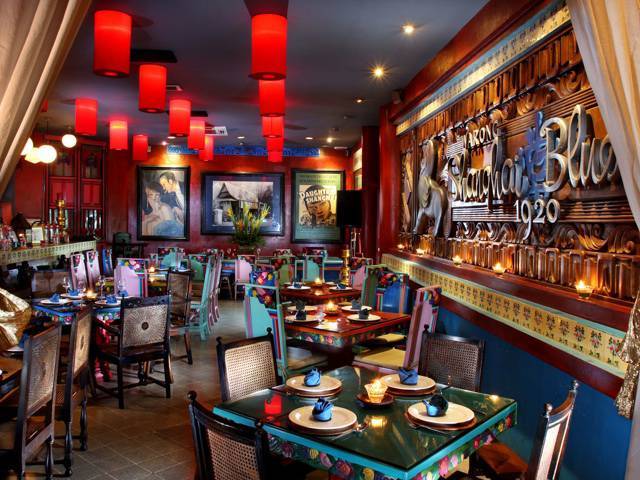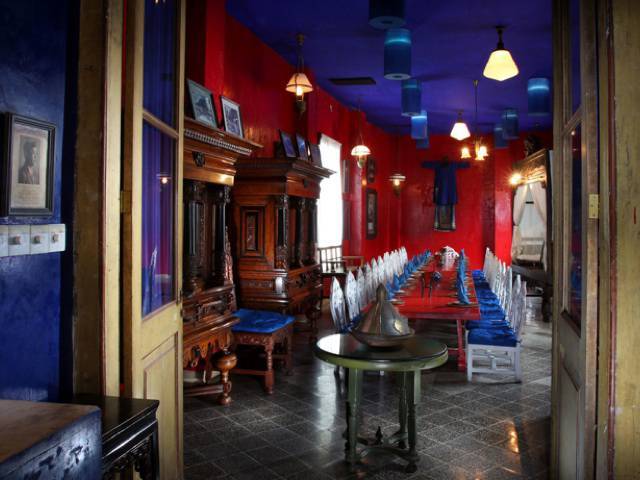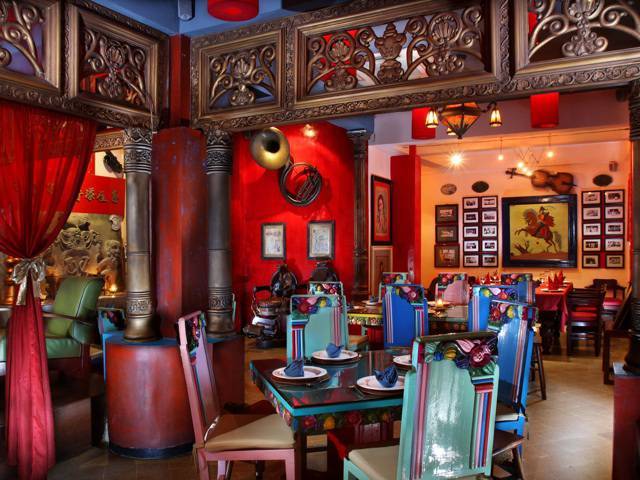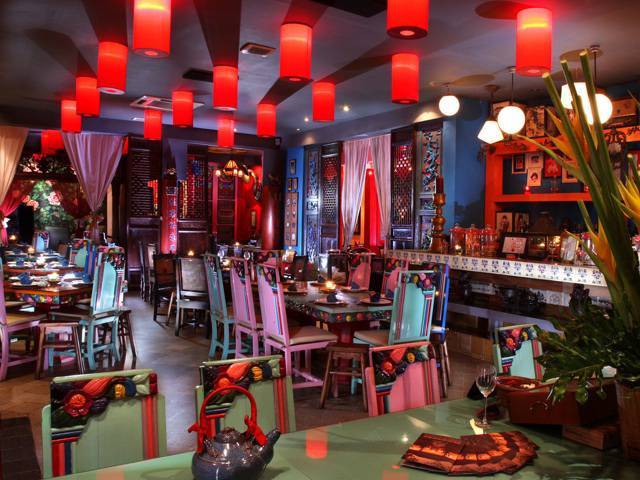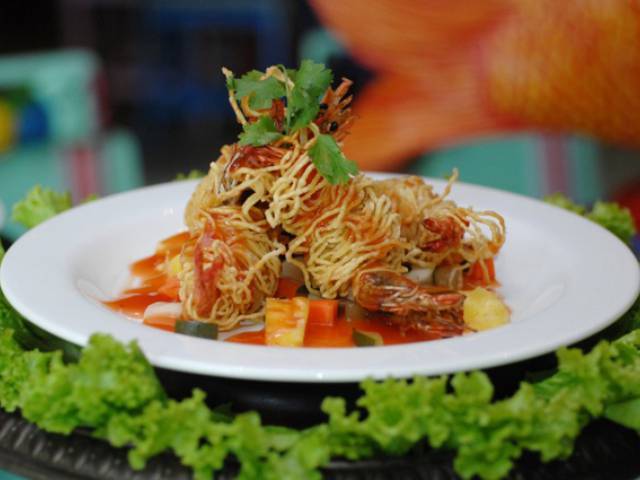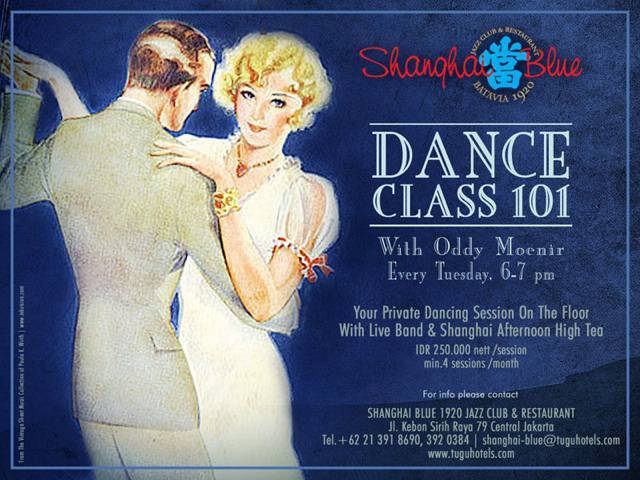In Memory of Batavia 1920
The enchanting story of how a Shanghainese tea house, Shanghai Blue, ended up in Jakarta.
JAKARTA One of the most glamorous cities of the world, an exotic melting pot of the East and the West, a fascinating mélange of the glittering glitz and the boisterous poor. In 1839, the Opium War began when Emperor Tao Kuang of the Ching Dynasty sent his honorable man Lin Tse Hsu to Canton, to put a stop to the spread of opium by the merchants of the West, which was slowly weakening the Kingdom of Manchu. In 1842, the Treaty of Nanking opened the doors of Shanghai to the world, where it became one of the most bustling international harbor cities along with Amsterdam, London and New York.
Lin ordered for all the opium in the British ships to be surrendered to him. He then destroyed 20 large crates of opium in return of the liberation of the British captives. Eight months after, the British military attacked, following previous attacks by the military of the British India in the preceding months. These attacks seriously debilitated the military of Manchu.
In 1841, the Opium War resumed until Sir Henry Pottinger invaded Ningpao, blocked the giant canal and thus the food supply for Beijing. In l842, the British military took over Shanghai and headed towards Nanjing. Discussions were opened between the British and the Manchu governments. With the much stronger stance of the British government, the Manchu yielded, the Treaty of Nanking was signed, and Hong Kong was lost to the British. Manchu was forced to open its 5 big harbors, and a diplomatic relation with Britain was to be established. This was the beginning point when Shanghai grew to be the exciting city famed for its glamour ever since.
In the late 1800s and early 1900s, with its bustling international port, Shanghai was dotted with a large number of tea houses. These tea houses were often chaotic, where in many cases the number of patrons could exceed 1.000 guests. Many of these tea houses became the meeting places with ‘Shanghai Girls’, some others provided partitions or rooms to smoke opium. However, there were naturally also a few very exclusive tea houses for the privileged guests which provided refined atmosphere.
These tea houses featured top singers and old jazz bands of the city, where Western-style dancing was accompanied by the Shanghai Sing Song Girls. Some of the songs that became very famous until now are Mekwei Mekwei Wo Ai Ni (Rose Rose I Love You) or Ye Shanghai (Shanghai Night).
One of the ships that left Shanghai finally harbored in Sunda Kelapa (the old port of Batavia) towards the end of 19th century, where a new history began. Among the sailors who harbored with that ship was a Shanghainese called Nko Mo San. Not much was known of his background, but when he arrived in Batavia he took on the profession of a construction worker. He had a son called Chan Mo Sang who then married a woman from Batavia called Siti Zaenab.
Chan Mo Sang and Siti Zaenab started a small humble warong in Sunda Kelapa. This warong was known as Shanghai Tea House; a large signage was hung in front of the warong, sponsored by a local cigarette company of that time. The Shanghai Tea House developed into a popular place frequented by sailors from different origins who harbored in Sunda Kelapa, who spent lively evenings in Batavia dancing with the local women in this Shanghai Tea House. The warong was also often visited by pirates, opium dealers, and others. Some of the items left from this warong from the early 1900s, such as opium pipes, ended up in Hotel Tugu Malang now.
As the humble warong became more and more popular, Siti Zaenab and her husband Chan Mo Sang gradually renovated and expanded it to become more sophisticated. The services of the warong were also extended, and the warong soon became a tailor, a shoe repair, a barber, and still a bustling but romantic meeting and dancing place in evenings.
The Shanghai Tea House serves a combination of Shanghainese recipes and authentic Batavian dishes; all of which were simple home-cooking cooked under the supervision of Siti Zaenab who acquired all her cooking skills from her mother in law.
Dance Class 101 at Shanghai Blue 1920 Jazz Club & Restaurant
By the 1920s and ‘30s, Shanghai especially epitomized glamour with its tea halls, fancy-dress balls, banquets, and cabaret shows. Shanghai’s reputation as Asia’s nightlife Mecca eventually influenced the Batavian nightlife. Along with Sing-Song Girls, jazz clubs featuring local talents, dance clubs were also mushrooming till 1930’s
Now, yesterday once more, Shanghai Blue presents Dance Class 101, exclusive private dance class with Oddy Moenir, a respected senior dancer in Jakarta. From ballroom to Latin dance, all beginners are welcomed.
Jl. Kebon Sirih Raya 77 - 79 • Jakarta Pusat • Tel. +62 21 391 8690, +62 21 392 0384 • Fax. +62 21 391 8675 shanghai-blue@tuguhotels.com | www.tuguhotels.com
